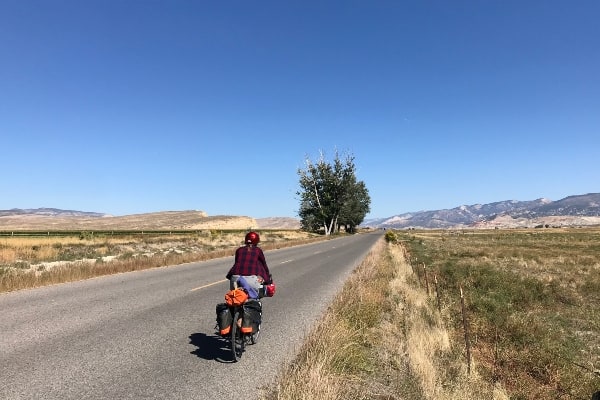Have you ever driven past someone on a bike at -35 in a blizzard and thought they were crazy?
You’re probably not alone. Let’s face it, it’s cold and miserable outside, and bikes aren’t really designed to tackle winter conditions (anyone who has ever tried to ride their mountain bike down a toboggan hill knows this from experience).
Before you start sending those hardcore enthusiasts to the asylum, you should take some time to learn about the new trend taking the territory by storm that makes them appear a little saner.
Snow bikes, made by companies like Surly and Fatback, sport big tires that run at low pressures, which makes it possible to ride over terrain that is difficult or impossible to ride on a ‘regular’ bike (like deep snow).
Tristan Geisel from Icycle Sports estimates that they have seen at least 10 of these bikes walk out their doors during this season alone.
“Snow bikes are really big in Whitehorse now,” he says.
“I would estimate that there are at least 50 in town. Here and Winnipeg are the two places that they’re big,” he adds with a laugh.
One of those local enthusiasts is Allan Frostad. The Canada Games Centre employee rides his snow bike almost exclusively for commuting to work.
“I try to ride as much as possible, but in the winter that probably means about half the time. When it’s below -30, I ride all the time, because low temperatures are so hard on the car.”
Frostad adds, “Recently I’ve really begun to see bicycles not as toys, but more as a way to get from where I am, to where I’d like to be. Partly that’s just an excuse to buy more bikes; I already have a good collection of ‘toy’ bikes. Now I’m working on the commuter and cargo bike side of things.”
The freedom his snow bike provides is a major selling point for Frostad.
“Because they have much larger tires, and much better floatation, you can ride on softer snow than you can with a conventional bicycle. This allows you to ride on smaller trails, and further to the side of roads, keeping you more out of the way of cars,” he explains.
“Wow, those are fat tires!” is the most common reaction Frostad gets to his bike. The tires on his bike are about four inches wide, or twice the width of a normal mountain bike tire.
If you add in the fact that you normally run them at very low pressures (10 psi or less), you get a contact patch that’s many times the size of a standard tire.
In slushy conditions that exist in most of southern Canada, a narrow studded tire works best, to cut through the muck and get traction on the hard ground below. But in dry, snowy conditions like we have here, it’s all about the floatation.
That fantastic floatation provided by his tires has allowed Frostad to join the ranks of those “crazies” you see cycling in freezing temperatures and white-out conditions.
“I was hoping to break my record of -39 during the most recent cold snap,” he explains, “but alas, we didn’t drop below that. Someday I’ll crack the -40 mark.
“I’ve ridden in some pretty snowy, windy conditions that made me glad to be off the streets. The nice thing about riding mostly on trails is that you don’t have to worry about the idiot who didn’t scrape his windshield and is driving too fast for the conditions, rear ending you at a red light.”
Frostad concludes with a pitch for others to join him and his cohort of fat-tire aficionados.
“I guess it’s a hard sell, but winter riding (even in the extreme cold) isn’t nearly as crazy as it seems. If you’re trail riding, crashes are cushioned by a nice, thick layer of fluffy snow.”
Frostad even claims he is more comfortable riding than driving when it is -35.
“My hands, and butt, are much warmer on the bike than in the car. It’s honestly quite easy to dress warm enough, while still being able to ride.
“I’ve often found that if I dress warm enough to not freeze when I get in the car – unless I’ve idled it for an excessive amount of time – I can hardly get in! Like most things, once you get into the routine, it’s not a big deal.”
Amber Church is a painter, writer and sports enthusiast. You can reach her at [email protected].




